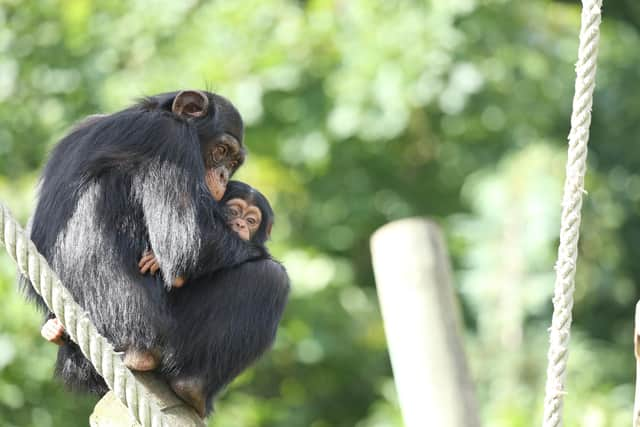The senior keeper at Edinburgh Zoo shares her day working with the resident chimps
7.30am
After arriving at the zoo and changing into my work gear, I check on some of our animals on my way to the Budongo Trail, where our chimps live. The buff-cheeked gibbons and Bagot goats are nearby, so I give them their breakfast on the way.
8.10am


When I get to the chimp house, I check everyone is where they should be and give them their morning banana. This is the best time to administer any medication or supplements, and give each member of the troop a visual check – it’s important for us to identify each individual rather than just counting them. Recognising all 15 is easy when you’ve worked with them for a while.
9am
Advertisement
Hide AdAdvertisement
Hide AdWe’ve prepared the first feed for the troop. They are served a variety of vegetables, grains, pulses and seeds multiple times throughout the day. When the outdoor area has been cleaned and safely checked, we put out their food and let them outside.
10am
We are lucky to have a research area in our building, in partnership with St Andrew’s University, where the chimps can choose to take part in a variety of sessions mostly aimed at understanding their cognitive abilities. Once we know what research sessions are planned for the morning, we can prepare the area and assist the researchers.
10.30am
Break time, so we can have our own breakfast. The second part of our morning is taken up with cleaning the large chimp habitat, Budongo Trail. It’s one of the world's most innovative and interactive chimpanzee enclosures and has a large outdoor area with climbing frames and plenty of vegetation and opportunities for fun, foraging and exercise. There are also three indoor ‘pods’, which have different environmental conditions such as temperature, humidity and lighting.
2pm
After lunch, we do more feeds for the chimpanzees and other animals. We also take part in our discovery ranger talks, during which visitors can learn more about our troop as well as the vital conservation work our charity does with the Budongo Conservation Field Station (BCFS) in Uganda.
3pm
We try to fit in daily training with the animals. Sessions with the chimps allow us to check their hands, feet, mouth and administer medications with their co-operation. It also gives us a chance to develop relationships and understand every individual. After the afternoon tasks are complete, we give everyone their final feed, bring them inside and do final checks before we tidy up and head home.
6pm
When I get home, I make something easy like risotto or a stir fry. I'm not a fan of cooking, so dinner needs to be easy and tasty. After that, I'll relax and watch some TV. My current favourite programme is Portrait Artist of the Year on Sky Arts.
10.45pm
Before I go to sleep I always try to squeeze in a few chapters. I've been enjoying Lessons in Chemistry by Bonnie Garmus, which follows chemist Elizabeth Zott as the only woman in her lab in the Sixties.
As well as being part of the European Endangered Species breeding programme for chimpanzees, RZSS has funded conservation efforts in the Budongo forest in Uganda since 2005. Find out more at bit.ly/RZSSConservationBudongo